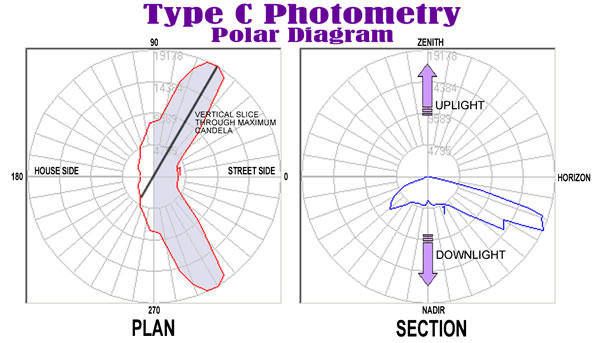



Type C Photometry is used to indicate the light distribution for architectural lighting products (interior and area lighting luminaires). Type B Photometry is used for floodlight distributions.
When viewing Type C polar curves in PTB, the horizontal cone and vertical slice through the maximum candela point is shown by default. In general, this is analogous to viewing the photometric web in Plan and Section view at the most luminous location.
Plan View
Begin by looking at the horizontal cone (the Plan View). This shape indicates the horizontal directionality of the luminaire with respect to its testing position and any symmetry it exhibits.
|
|
|
|
|
|
House Side / Street Side - Horizontal values between 270° and 90° are in front of the luminaire and are referenced as "Street Side". Horizontal values between 90° and 270° are behind the luminaire and are referenced as "House Side". (This assumes counterclockwise rotation).
Section View
The Vertical plane is also taken through the maximum candela angle. When viewing the Vertical plane, you are looking at a section of the photometric web from the side, perpendicular to the maximum candela angle.
The vertical plane provides us with the luminaire's vertical distribution type and cutoff characteristics.
|
Narrow Distribution (Vertical Plane) |
Wide Distribution (Vertical Plane) |